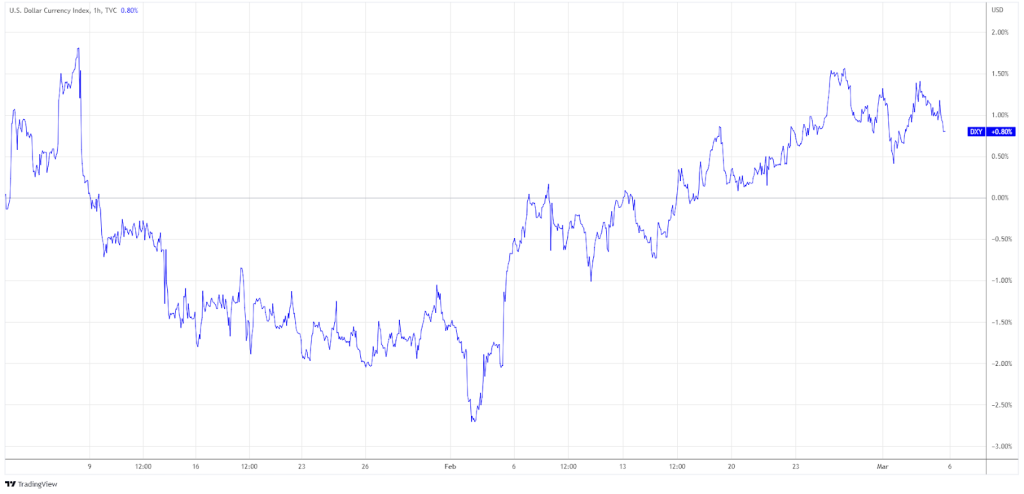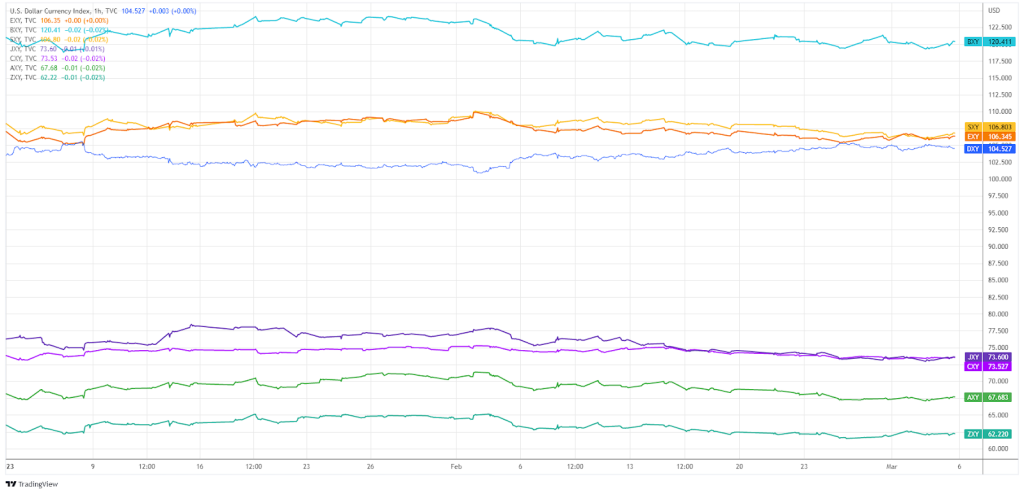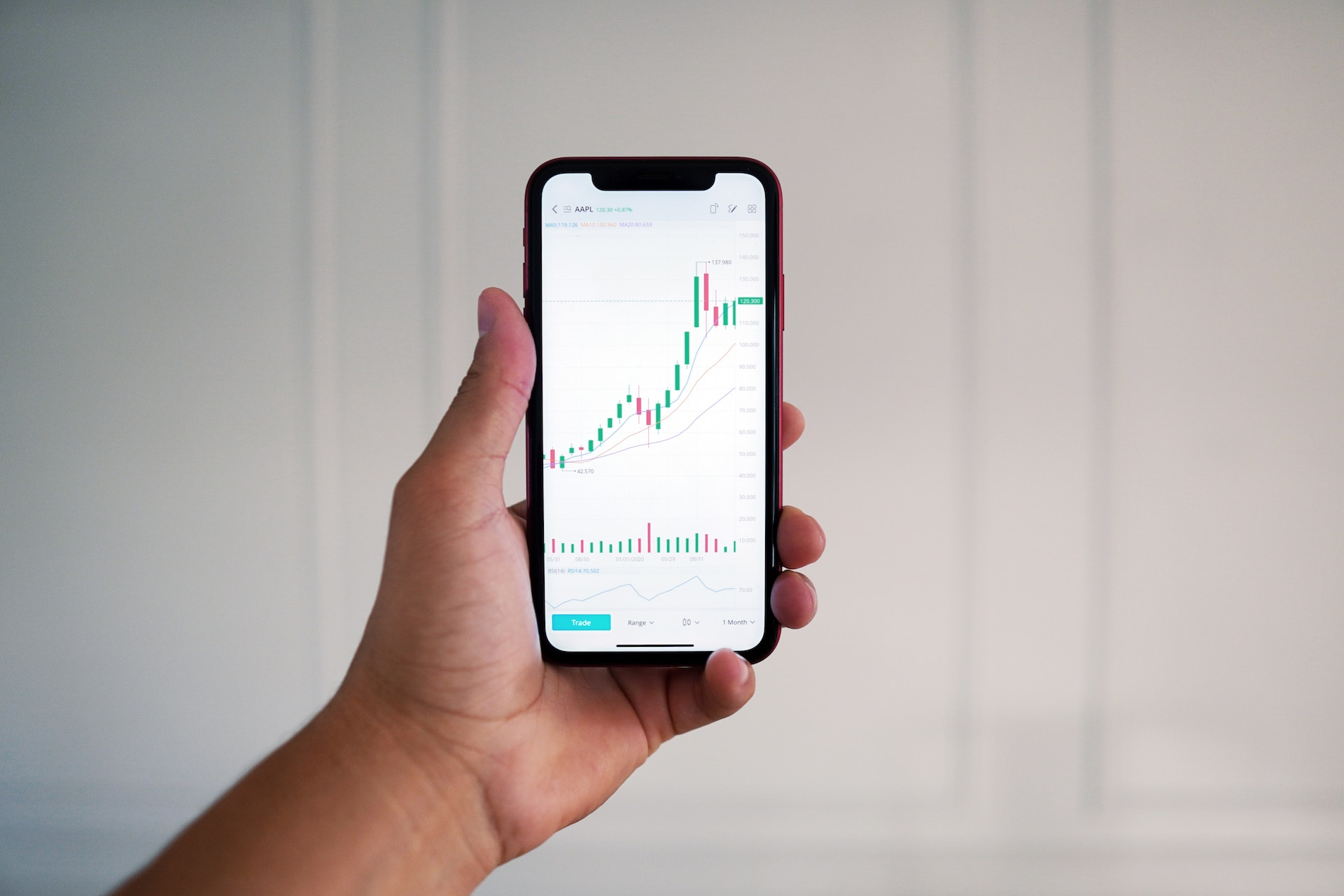Dynamics of world indices at the beginning of 2023
Currency indices, in simple words, are a general metric of the currency of a certain country without reference to the exchange rate. In a more complicated sense – the total ratio of the currency to a basket of other leading world currencies.
In the forex market, in addition to observing and trading certain pairs, many experienced traders use indices as additional analysis tools. In particular, the dollar index (DXY). Indices can act as guides or as filters. Such strategies are quite rare, and are mainly used for high-speed trading on short timeframes, when the slightest change in indicators can be a signal for a deal.
As filters, indices are used for longer-term trades, when the trend of a currency pair can be controversial. By considering the quote currency, you can use its index to understand the strength relative to others and understand the sentiments of large players regarding it.
Another popular use of index derivatives is futures when trading volume based strategies. Futures for currency indices traded on the Chicago Stock Exchange (CME) are analyzed by volume, from which traders draw conclusions regarding the levels or zones of accumulation of market activity. When compared to pairs, these places often coincide or completely overlap each other, which makes it easier to understand the structure and direction of a trend or sideways movement.
Indices also typically reflect real changes in currency strength when news releases. For example, the result of the US unemployment report will be easier and more correct to track on the index, and not on EUR/USD or another pair with the dollar. Yes, the change will also be reflected in the pairs, but the correlation with the news factors of other countries will also affect this one. Therefore, the index will show a more accurate impact. It is much easier to open the economic calendar, check the aggregate news, and mark these moments on the index chart, rather than on each pair, in order to have a complete picture of events. After that, the upcoming news will be applicable already for pairs for planning transactions based on the results and expectations of reactions, which are easy to study by indices.
More on currency indices for the beginning of 2023.
US Dollar Index (DXY) – since January 1, the change was only 1%, while the peak was on January 6, followed by a minimum of -2.5% on February 1 and subsequent growth to current levels.
 The Euro Currency Index (EXY) – the current change is 0.72% since the beginning of the year. January 6 was the maximum decline to -0.5%. It is worth noting that the Euro and the US Dollar are often inversely correlated with each other, so a peak value of 4.09% was reached on February 1st.
The Euro Currency Index (EXY) – the current change is 0.72% since the beginning of the year. January 6 was the maximum decline to -0.5%. It is worth noting that the Euro and the US Dollar are often inversely correlated with each other, so a peak value of 4.09% was reached on February 1st.
British Pound Currency Index (BXY) hit its low of -0.94% on January 5, and strengthened to 3.49% on January 18 and stayed in the area until February 1, peaking at 3.51% on January 26. This was followed by a decline to the current value of 0.42%.
Swiss Franc Currency Index (SXY) – the maximum was on February 1 and amounted to 3.04%, while the minimum was as recently as March 2, where the change was -0.78%. In general, the currency only slightly managed to strengthen its position, rising to -0.04%.
Japanese Yen Currency Index (JXY) – Japan’s currency has not been in the best condition for a long time, and this year’s current figures are at -3.81%. The maximum growth occurred on January 13 and amounted to 2.47%. The minimum, in turn, was on March 2 and amounted to -4.67%.
Canadian Dollar Currency Index (CXY) – the currency was at its lowest since the end of 2022 and already on January 3 there was a change of -0.03%. This was followed by growth, which ended on February 1 with a value of 2.89% and weakening to the current 0.40%.
Australian dollar (AXY) – from the very beginning of the year, there was a steady growth and strengthening until February 1, when the maximum value was 5.93%. The weakening can still be observed, the minimum of which fell on March 2 and amounted to -0.42%.
The New Zealand dollar (ZXY) – the currency often follows the same route as the Australian dollar, so it peaked at 4.25% on February 2, and the low was already -1.60% on February 24. The current value fluctuates at -0.42%.
Below there is a summary chart comparing all major currency indices with their value in points.

The higher the index, the stronger the currency is in relation to others and the more confident it looks on the exchange. Also, as a fundamental factor, the currency of the respective country becomes more reliable.

